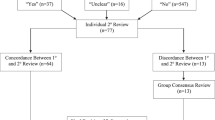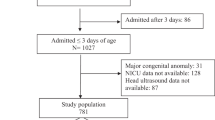Abstract
With the introduction of novel technologies and approaches in neonatal care and the lack of appropriately designed and well-executed randomized clinical trials to investigate the impact of these interventions, iatrogenic complications have been increasingly seen in the neonatal intensive care unit. In addition, increased awareness and the introduction of more appropriate quality control measures have resulted in higher levels of suspicion about and increased recognition of complications associated with delivery of care. The incidence of complications also rises with the increased length of hospital stay and level of immaturity. Approximately half of the iatrogenic complications are related to medication errors. The other complications are due to nosocomial infections, insertion of invasive catheters, prolonged mechanical ventilation, administration of parenteral nutrition solution, skin damage and environmental complications. Adopting newer technologies and preventive measures might decrease these complications and improve outcomes. Quality improvement projects targeting areas for improvement are expected to build team spirit and further improve the outcomes. In addition, participation in national reporting systems will enhance education and provide an opportunity to compare outcomes with peer institutions.
This is a preview of subscription content, access via your institution
Access options
Subscribe to this journal
Receive 12 print issues and online access
$259.00 per year
only $21.58 per issue
Buy this article
- Purchase on Springer Link
- Instant access to full article PDF
Prices may be subject to local taxes which are calculated during checkout

Similar content being viewed by others
References
Online Medical Dictionary and glossary with medical definitions; http://www.medterms.com.
Jain L, Vidyasagar D . Iatrogenic disorders in modern neonatology. Clin Perinatol 1989; 16 (1): 255–273.
Ramachandrappa A, Jain L . Iatrogenic disorders in modern neonatology: a focus on safety and quality of care. Clin Perinatol 2008; 35 (1): 1–34.
Kohn L, Corrigan J, Donaldson M . To Err is Human: Building a Safer Health System. Institute of Medicine; National Academy Press: Washington, DC, 2000.
Leape L . Reporting of adverse events. N Engl J Med 2002; 347: 1633–1638.
Brennan TA, Leape LL, Laird NM, Hebert L, Localio AR, Lawthers AG et al. Incidence of adverse events and negligence in hospitalized patients. N Engl J Med 1991; 324: 370–376.
Leape LL, Brennan TA, Laird NM, Lawthers AG, Localio AR, Barnes BA et al. The nature of adverse events in hospitalized patients. New Engl J Med 1991; 324: 377–384.
Ligi I, Arnaud F, Jouve E, Tardieu S, Sambuc R, Simeoni U . Iatrogenic events in admitted neonates: a prospective cohort study. Lancet 2008; 371 (9610): 404–410.
Kugelman A, Inbar-Sanado E, Shinwell ES, Makhoul IR, Leshem M, Zangen S et al. Iatrogenesis in neonatal intensive care units: observational and interventional, prospective, multicenter study. Pediatrics 2008; 122 (3): 550–555.
Snijders C, van Lingen RA, Molendijk A, Fetter WP . Incidents and errors in neonatal intensive care: a review of the literature. Arch Dis Child Fetal Neonatal Ed 2007; 92 (5): F391–F398.
Santell JP, Hicks RW, McMeekin J, Cousins DD . Medication errors: experience of the United States Pharmacopeia (USP) MEDMARX reporting system. J Clin Pharmacol 2003; 43 (7): 760–767.
Chedoe I, Molendijk HA, Dittrich ST, Jansman FG, Harting JW, Brouwers JR et al. Incidence and nature of medication errors in neonatal intensive care with strategies to improve safety: a review of the current literature. Drug Saf 2007; 30 (6): 503–513.
Suresh G, Horbar JD, Plsek P, Gray J, Edwards WH, Shiono PH et al. Voluntary anonymous reporting of medical errors for neonatal intensive care. Pediatrics 2004; 113 (6): 1609–1618.
Stavroudis TA, Miller MR, Lehmann CU . Medication errors in neonates. Clin Perinatol 2008; 35 (1): 141–161.
Morimoto T, Gandhi TK, Seger AC, Hsieh TC, Bates DW . Adverse drug events and medication errors: detection and classification methods. Qual Saf Health Care 2004; 13: 306–314.
Myers TF, Venable HH, Hansen JA . Computer-enhanced neonatology practice evolution in an academic medical center. NICU Clinical Effectiveness Task Force. J Perinatol 1998; 18 (6 Part 2 Suppl): S38–S44.
Lucas AJ . Improving medication safety in a neonatal intensive care unit. Am J Health Syst Pharm 2004; 61 (1): 33–37.
Larsen GY, Parker HB, Cash J, O’Connell M, Grant MC . Standard drug concentrations and smart- pump technology reduce continuous-medication-infusion errors in pediatric patients. Pediatrics 2005; 116 (1): e21–e25.
Krupicka MI, Bratton SL, Sonnenthal K, Golstein B . Impact of a pediatric clinical pharmacist in the pediatric intensive care unit. Crit Care Med 2002; 30 (4): 919–921.
Zenk KE . How you can serve as a pharmacist to the neonate. Pharm Times 1980; 46 (11): 40–49.
Khoo GP, Bolton O . Neonatal and pediatric intensive care. Hospital Pharmacist 2003; 10: 66–71.
Cordero L, Kuhn L, Kumar RR, Mekhjian HS . Impact of computerized physician order entry on clinical practice in a newborn intensive care unit. J Perinatol 2004; 24: 88–93.
Wenzel RP, Edmond MB . Team based prevention of catheter related infections. N Engl J Med 2006; 355 (26): 2781–2783.
Polin RA, Saiman L . Nosocomial infections in the neonatal intensive care unit. Neo Rev 2003; 4: 81–89.
Clark R, Powers R, White R, Bloom B, Sanchez P, Benjamin DK . Nosocomial infection in the NICU: a medical complication or unavoidable problem? J Perinatol 2004; 24: 382–388.
Stoll BJ, Hansen N, Fanaroff AV, Wright LL, Carlo WA, Ehrenkranz RA et al. Late- onset sepsis in very low birth weight neonates: the experience of the NICHD Neonatal Research Network. Pediatrics 2002; 110: 285–291.
Stoll BJ, Temprosa M, Tyson JE, Papile L, Wright LL, Bauer CR et al. Dexamethasone therapy increases infection in very low birth weight infants. Pediatrics 1999; 104: e63.
Stephenson J . Can a common medical practice transform Candida infections from benign to deadly? JAMA 2001; 286: 2531–2532.
Hermansen MC, Hermansen MG . Intravascular catheter complications in the neonatal intensive care unit. Clin Perinatol 2205; 32: 14–146.
Lester PD, Jung LA . Complications of intubation and catheterization in the neonatal intensive care unit. RadioGraphics 1981; 1: 35–60.
Ramasethu J . Complications of vascular catheters in the neonatal intensive care unit. Clin Perinatol 2008; 35: 199–222.
Verder H, Albertsen P, Ebbesen F, Greisen G, Robertson B, Bertelsen A et al. Nasal continuous positive airway pressure and early surfactant therapy for respiratory distress syndrome in newborns of less than 30 weeks’ gestation. Pediatrics 1999; 103: E24.
Sekar KC . The role of continuous positive airway pressure therapy in the management of respiratory distress in extremely premature infants. J Pediatr Pharmacol Ther 2006; 11: 145–152.
Sekar KC, Corff KE . To tube or not to tube babies with respiratory distress. J Perinatol 2009; 29: S68–S72.
Ramanathan R, Sekar K, Rasmussen M, Bhatia J, Soll R . NIPPV versus SIMV after surfactant treatment for respiratory distress syndrome in preterm infants <30 weeks gestation: multicenter randomized trial. Acta Pediatrica 2009; 98: 45–46.
Heine RG, Bines JE . New approaches to parenteral nutrition in infants and children. J Paediatr Child Health 2002; 38 (5): 433–437.
Adamkin DH . Pragmatic approach to in-hospital nutrition in high risk neonates. J Perinatol 2005; 25: S7–S11.
Hermansen MC (ed). Iatrogenic disease. Clin Perinatol 2008; 35: 1.
Silow-Carrol S, Alteras T, Meyer JA . Hospital quality improvement: strategies and lessons from US hospitals. 2007; 54: 1–38. http://www.commonwealthfund.org/usr_doc/site_docs/annualreports/2007/AR2007.pdf.
Lee L, Girish S, Van den Berg E, Leaf A . Random safety audits in the neonatal unit. Arch Dis Child Fetal Neonatal Ed 2009; 94: F116–F119.
Bedwell SM, Kitz JL, Bright B, Sekar KC . Decrease in the incidence of ventilator associated pneumonia (VAP) in the neonate after the introduction of VAP bundle intervention in the NICU. E-PAS2009:2847.463.
Corff KE, Bedwell SM, Bright B, Sekar KC . Targeted oxygen saturation for premature infants significantly decreases chronic lung disease and severe retinopathy of prematurity requiring laser surgery. E-PAS2008:4451.5.
Horbar JD . The Vermont Oxford network: evidence-based quality improvement for neonatology. Pediatrics 1999; 103: e350–e359.
Author information
Authors and Affiliations
Corresponding author
Ethics declarations
Competing interests
KC Sekar was a member of the speaker's bureau and a consultant for Dey, LP.
Additional information
This paper resulted from the Evidence vs Experience in Neonatal Practices conference, 19 to 20 June 2009, sponsored by Dey, LP.
Rights and permissions
About this article
Cite this article
Sekar, K. Iatrogenic complications in the neonatal intensive care unit. J Perinatol 30 (Suppl 1), S51–S56 (2010). https://doi.org/10.1038/jp.2010.102
Published:
Issue Date:
DOI: https://doi.org/10.1038/jp.2010.102
Keywords
This article is cited by
-
Advancements in neonatology through quality improvement
Journal of Perinatology (2022)
-
Clinical determinants of cerebrovascular reactivity in very preterm infants during the transitional period
Pediatric Research (2022)
-
Hospital variation in admissions to neonatal intensive care units by diagnosis severity and category
Journal of Perinatology (2021)
-
Delivery timing after laser surgery for twin-twin transfusion syndrome
Journal of Perinatology (2020)
-
Defining electronic-prescribing and infusion-related medication errors in paediatric intensive care – a Delphi study
BMC Medical Informatics and Decision Making (2018)



